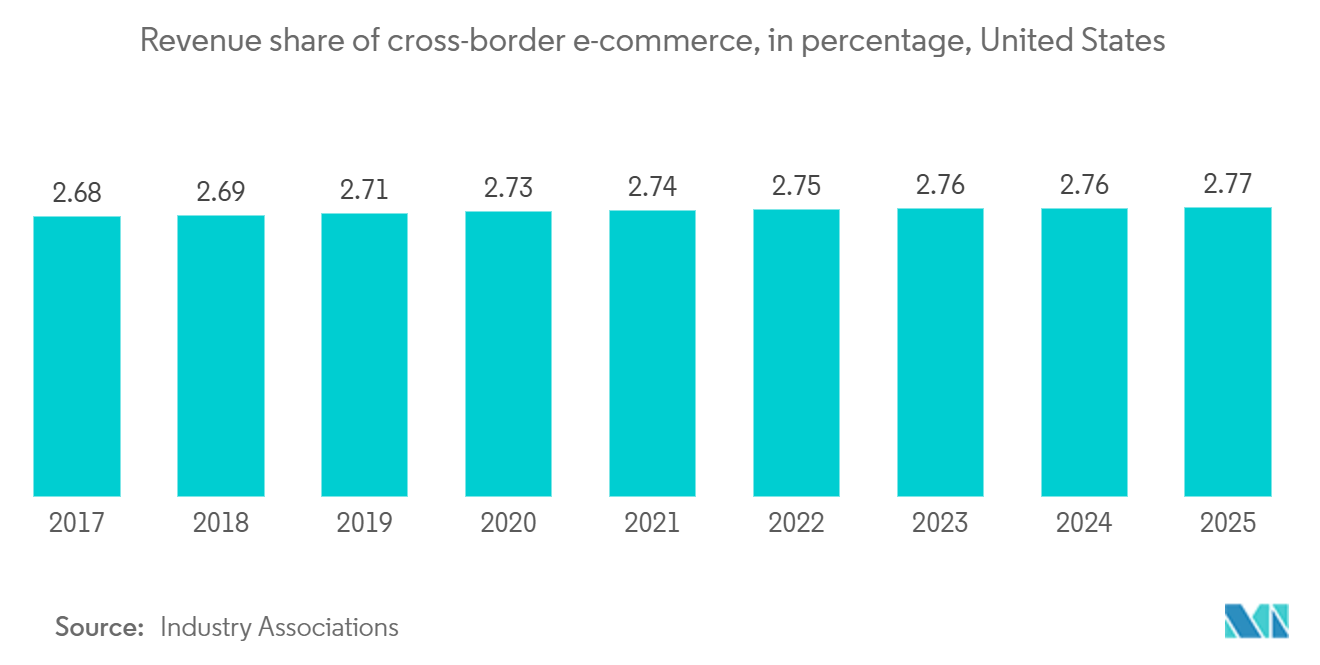Market Trends of US Express Delivery Industry
Etail Boom Fuels Demand for Express Delivery Services
- In 2023, U.S. e-commerce constituted 22.0% of total retail sales, according to the U.S. Department of Commerce. This represents an uptick from the 21.2% share recorded in 2022. U.S. e-commerce sales in 2023 hit approximately USD 1.119 trillion, a 7.6% rise from the USD 1.040 trillion tallied in 2022. At the same time, total retail sales climbed to about USD 5.088 trillion in 2023, up from roughly USD 4.904 trillion in 2022, marking a 3.8% increase. This swift ascent in online sales has intensified the demand for express delivery services.
- Amazon reigns supreme in the U.S. e-retail arena. With a commanding share of nearly 40% in the online shopping domain, Amazon's closest rivals trail far behind, capturing a modest 1% to 6% each. Moreover, Amazon's e-retail sales in the U.S. significantly eclipse those of its competitors. In 2023, Amazon's U.S. retail e-commerce sales soared to an impressive USD 135 billion, leaving Walmart's USD 65 million in the dust.
- In the realm of mobile commerce, Amazon is grappling with stiff competition from Chinese shopping apps. These apps have gained significant traction among U.S. online shoppers, particularly those seeking budget-friendly options.
- Notably, in 2023, Temu clinched the title of the most downloaded shopping app in the U.S., racking up an impressive 123 million downloads—outpacing Amazon by a staggering fivefold. Following closely was Shein, a fast-fashion platform, securing the second spot with approximately 37 million downloads. Yet, despite their download success, Temu and Shein fell short of eclipsing leading local players in e-commerce revenue in 2023. This indicates that while U.S. consumers are drawn to Chinese apps for their competitive pricing, these apps still navigate hurdles in the fiercely competitive U.S. landscape. Hence, as e-retail activities surge, so does the demand for express delivery services.

U.S. Cross-Border trade experience notable growth in 2023
- eCommerce has globalized shopping, with the U.S. emerging as a dominant player. Thanks to widespread internet access and eCommerce adoption, American consumers can easily access international markets.
- Cross-border imports have seen growth over the years, the U.S. import GMV in 2023 stood at a modest USD 221 million. In contrast, cross-border exports have shown a consistent upward trajectory, with a notable surge in 2020. By 2023, the export GMV reached USD 17 billion.
- In 2023, 53% of U.S. cross-border shoppers made their latest purchase from China, solidifying its status as the top foreign market. The UK and Japan followed, though with a significantly smaller share of purchases.
- Canada and Mexico are the primary markets for U.S. cross-border exports, followed by South Korea and Peru. However, consumers in these nations are increasingly gravitating towards China.
- While U.S. marketplaces like Walmart and eBay are prominent, Amazon stands out globally, not just for its brand but also for its staggering USD 728.8 billion GMV in 2023.
- Despite the robust export figures, the U.S. finds itself overshadowed in the global cross-border eCommerce arena by China. China's allure among international consumers is on the rise, bolstered by supportive policies, financing, and the establishment of cross-border eCommerce pilot zones. This environment has enabled Chinese platforms, such as Miravia and Temu, to swiftly penetrate and dominate new global markets.
- Recent developments indicate U.S. retailers are keen on maintaining their foothold with international customers. A case in point: eCommerce titan Amazon is gearing up to introduce a discount segment as a countermeasure to Temu. As competition intensifies and online demand for goods grows, the market sees a pronounced need for express delivery services.


